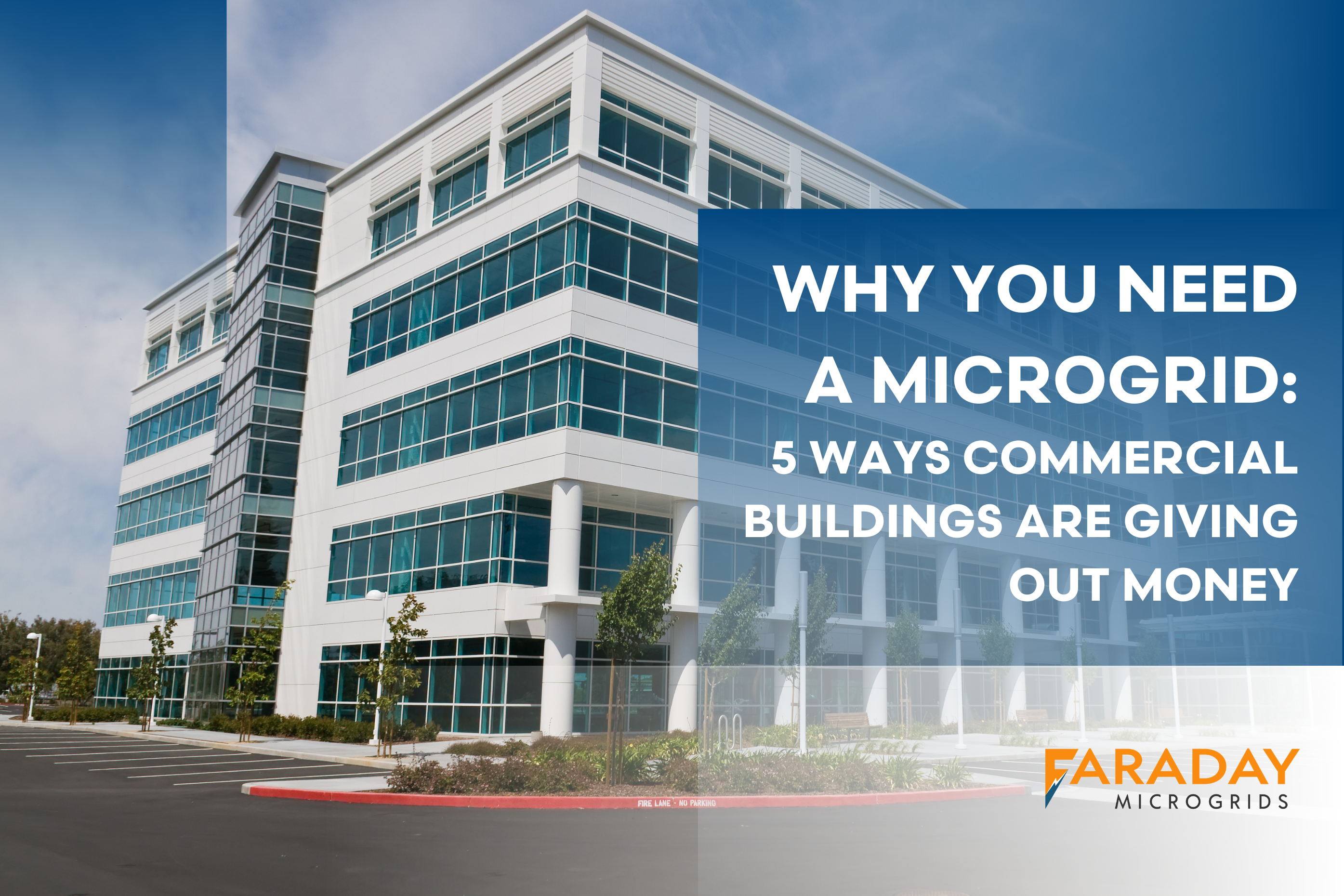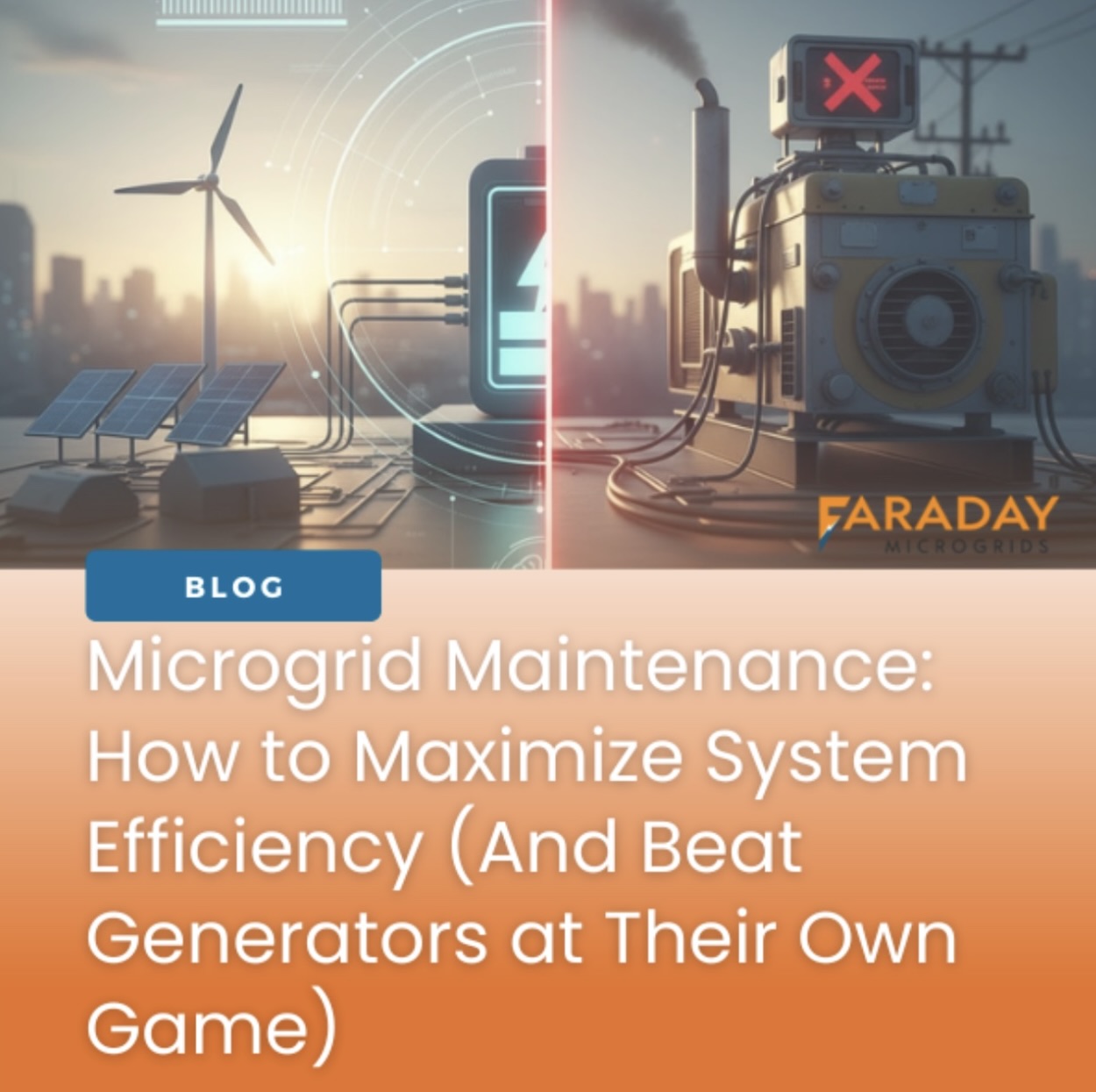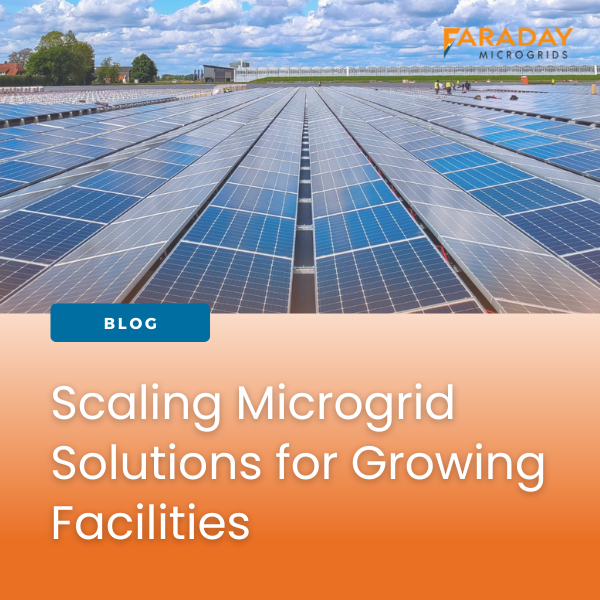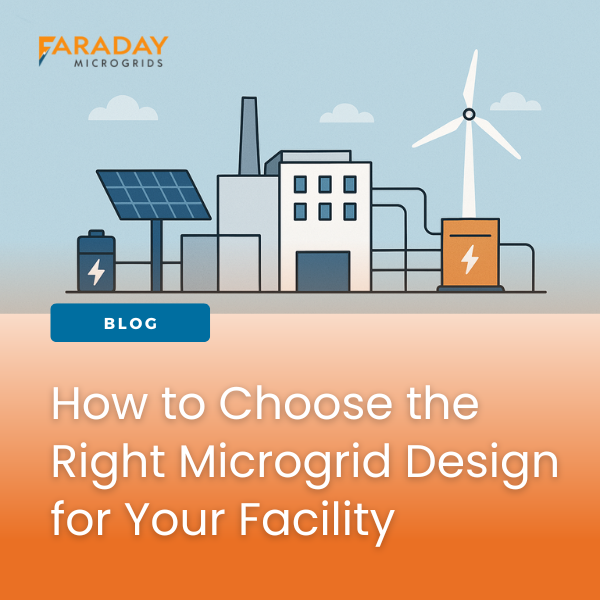Owners, operators, and managers of commercial buildings are constantly striving to stabilize facility costs.
Unfortunately, there are hundreds (or even thousands!) of important things to keep an eye on, and the reduction of energy expenses tends to fall by the wayside when more immediate needs surface.
Reducing energy consumption by establishing greater efficiency practices can make a difference, yes – but at the end of the day, most facilities are spending enormous amounts of money just to keep their building running, and don’t realize how lucrative a renewable energy system could be.
If you’ve been searching for a way to cut costs and conserve your energy budget, a renewable energy microgrid system could be the answer (and help you avoid leaving hard-earned money on the table!).
- In many locations, solar arrays and renewable energy microgrids increase the value of commercial properties without adding to the tax basis.
If a building or facility is subject to property tax, it cannot have the taxes raised because of the addition of a solar system.
In a variety of areas, including California, special laws have been passed that recognize the added property values that come from improvements specifically from solar photovoltaics. These same laws prohibit the building owner from having to shell out increased taxes because of the addition of solar panels!
Building owners may be able to capitalize on the added value (equity) of solar-paneled buildings using increased mortgage amounts, increased lease prices, and elevated facility sales value.
- Demand fees are added costs paid by commercial buildings that can be reduced.
When a commercial building buys energy from a utility company, it pays for the cost of each increment.
For electrical utilities, companies typically measure usage in kilowatt-hours or kWh. However, in addition to this foundational cost of accessing electricity, buildings are required to pay an added price for the fastest speed they demand or ‘pull’ the energy. This is often referred to as ‘kilowatts’, or kW.
Think of this like water filling a bucket: you pay not only for how much water you use to fill the bucket, but also for the fastest speed the water comes out of the spigot.
In fact, there may be multiple fees: one for the highest rate the entire month, and another for the highest rate during the most expensive usage period (now generally 4-9pm in many areas). A single, poorly timed demand “spike” for only one 15-minute period of utility use could be the difference between a manageable bill and a devastating one.
Renewable energy microgrids can produce and store energy, then dispatch the stored energy when it’s most valuable. This model of energy storage can greatly help facility owners to manage demand “spikes” and avoid paying an arm and a leg at peak usage time.
- When the utility goes down, so does the building.
Everyone’s experienced a power cut, and the aggravation of having critical systems go down.
When the power is out, you’re losing productivity, compromising inventory, and even putting essential business functions at risk. Have a supplementary system, such as solar arrays? Even these are required to go down when the utility does, so as not to injure electrical line workers!
At Faraday, we’ve seen businesses lose up to $1M or more in damaged equipment and compromised inventory. Sensitive equipment like servers and many manufacturing machines must be kept at stringent temperature tolerances. Essential services such as healthcare, water supply, heating, and cooling all depend upon fast restoration of power or backup energy systems.
The bottom line is, unless your building has a backup energy generation system with smart, automated controls and the ability to not export energy to the utility during an outage, you are stuck waiting in the dark.
- Sustainability (or lack of it) impacts public perception of your business.
Critical stakeholders are increasingly concerned with whether they are interacting with a company, facility, service, or product that’s associated with sustainably.
While the definition of sustainability is potentially debatable, the growing number of people who look for it believe sustainability should be evident, significant, and verifiable.
There are at least six major categories of things that can be done: Rethink, Refuse, Reduce, Reuse, Recycle, Repair. The entities that have done some of these things have reaped significant rewards with publicity, reputation, and revenue. On the flip side, those who aren’t pursuing sustainability risk active and negative responses from a growing mass that are willing to punish those they believe are not doing the “right” thing.
In general, companies who use renewable energy microgrids not only reap the direct benefits of cutting operating costs and having backup power, but also have a visible, measurable, and significant commitment to sustainability that can drive stakeholder engagement and good will.
- Underutilized or unused commercial building spaces can be put to work.
Owners, operators, and managers want to squeeze the most productivity out of commercial building spaces as is possible. However, many don’t consider how their empty roofs, parking lots, parking structures, or wide open spaces could be put to work producing, storing, and providing energy to cut utility costs.
If these spaces are operating as they do in most cases, they serve basic functions and may even gather some revenue (parking fees, for example). There is no reason they shouldn’t meet their fullest potential! Not having solar, batteries, and controls is simply leaving money on the table.
Charge Bliss was organized to provide the right tools to reduce and fix energy cost, cut peak demand, provide backup power, and make optimal use of underperforming commercial spaces.
CONTACT US to learn how we can reduce your costs, improve your building’s performance, and help you get more out of your facilities.






